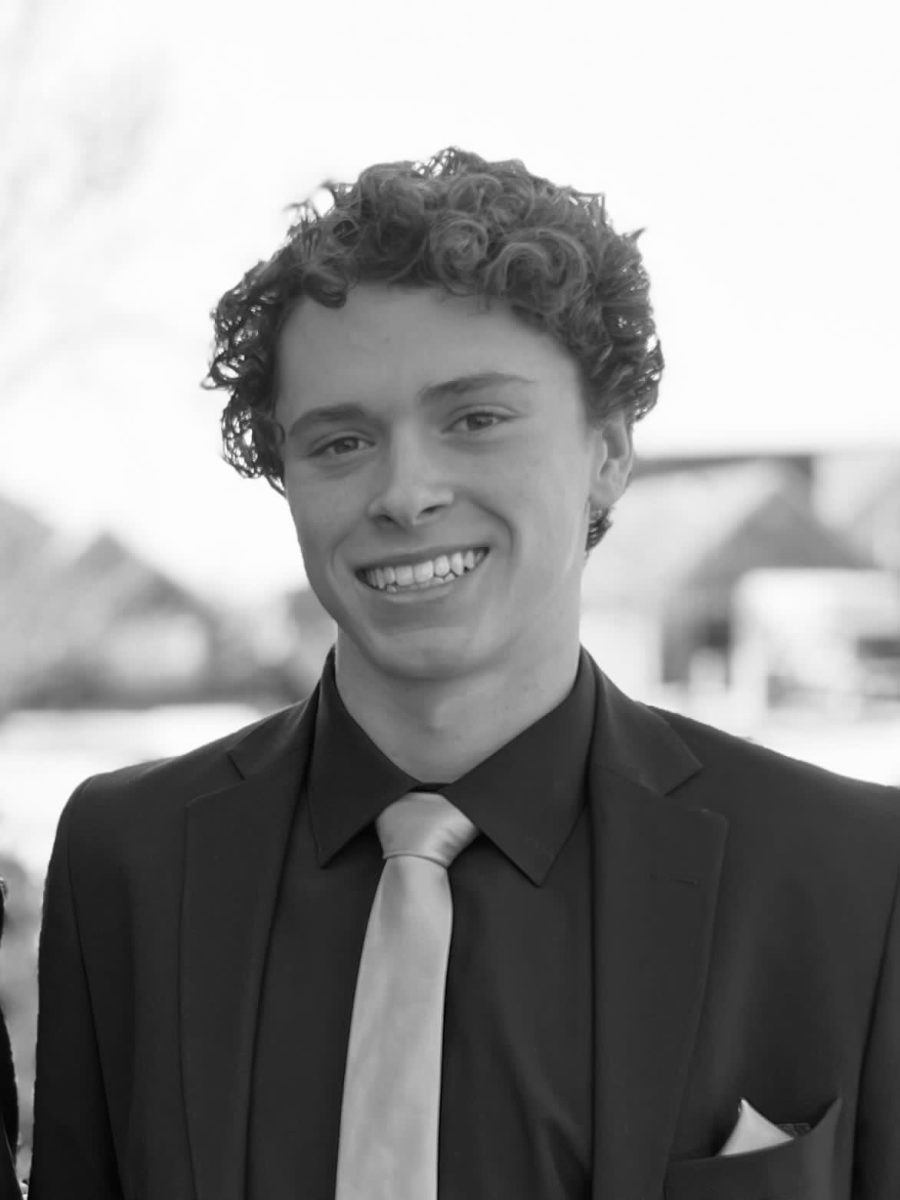For many people, sports are an important aspect of their life. Whether it be keeping themselves active, or the competition, physical activity based sports like football or swimming can be extremely beneficial and important for people’s lives. However, if you had an injury or condition that demanded a serious surgery that came with an extremely difficult recovery, would you keep playing a game that required such physical activity? If you had a problem with scoliosis that required metal rods to be placed into your spine, would you call it quits on sports? Most people would. Most people would pursue something else, and give up on their passion for sports.
Most people are not Noah Sullivan.
Sullivan is a senior who swims for the swim team. Sullivan first started swimming because of his cousin.
“My cousin swam and it looked like something fun to do,” Sullivan said.
Ever since then, Sullivan had been attached to swimming because it always encouraged him to improve himself. Speaking about it, he said, “something about seeing the clock and having like a black and white representation of how good you are, it made me want to push myself to be the best that I can.”
This feeling is one of the reasons why so many people are attracted to sports. The “black and white” feeling of improvement, of overcoming a challenge. No arguments about who won what, no maybe’s or different interpretations, just a flat, unbiased metric, telling you that you improved, that you overcame a challenge. He wanted to improve, and that he did.
According to senior Jack Young, a fellow swim team member and personal friend of Sullivan, “He was our top breaststroke, and I think he was in our A relay.”
Breaststroke is a category of swim, and A relay refers to participating in a relay race, where A is reserved for the top swimmers on the team. For most, overcoming a challenge and coming out improved is why people do sports in the first place. But what happens when the challenges come outside of the sport?
When Sullivan was in eighth grade, he had his first major surgery.
“I had a surgery on my brain called Chiari Decompression,” Sullivan said.
He had issues with brain swelling, which prompted the surgery. It involves removing bones at the back of the skull to make space for his brain. Brain surgery is already a major deal, but that wasn’t the end. He also dealt with scoliosis.
“Even though we corrected the thing that was causing the scoliosis, it still worsened a little, so last year in April, I had to get surgery to straighten out my back,” Sullivan said.
This surgery involves fusing the vertebrae of your spine by using metal rods that are screwed into the bone, so that the spine stays straight and in place.
“It was very painful,” he said. “Breathing hurts a lot, because breathing expands my lungs and puts pressure on my spine.”
The pain he was going through was also apparent to his friend.
“He was in a lot of pain there for a while, and it was kind of hard to see one of my teammates and one of my friends just go through that,” Young said.
When faced with multiple conditions that require surgeries with such brutal recovery, any normal person might pursue something else in their life. But Noah decided to do something different.
“There have been certain points where I have been close to quitting, just because of how hard it’s been coming back from it,” Sullivan said, speaking on his ability to continue swimming.
Swimming after these recoveries can be very hard, but that did not dissuade him. After his recovery period, Sullivan just got back into the pool.
“He pulled through. He would show up to swim functions and he wouldn’t swim but he’d be there to support,” Young said.
Later, when Sullivan was actually able to get back into the pool, Young said, “He was obviously slower than normal, trying to get back into everything.”
While it seemed the time away and the surgery had gotten to him, Young also later said, “[His time] is still quick. Like he’s quicker than a lot of people … he’s still one of our top swimmers.”
Even with all of this adversity, Sullivan overcame all of it and continued to swim.
“At the end of the day, swim has become a crucial part of my life. I felt like if I gave into it [his condition] I was gonna let this thing that was out of my control dictate my life,” Sullivan said.
To battle obstacles like that, it takes a lot of personal willpower, but one cannot fight that battle alone. That is why his friends were there for him.
“I think one big thing was the friends,” Young said, referring to how Sullivan was able to combat his recovery. “Mainly just being there for him, making sure he knew that there were people to support him.”
Sullivan does not have plan to continue to swim competively in college. However, he is instead going into neurology. His battle to continue swimming is something he will never forget.
“Everyday, whether it be back pain, or some residual pain, it’s just a reminder of the difference between where I used to be in swimming and where I am at now,” Sullivan said. “It serves as a reminder of what I’ve grown from, and I’m gonna be able to take it through for the rest of my life.”
